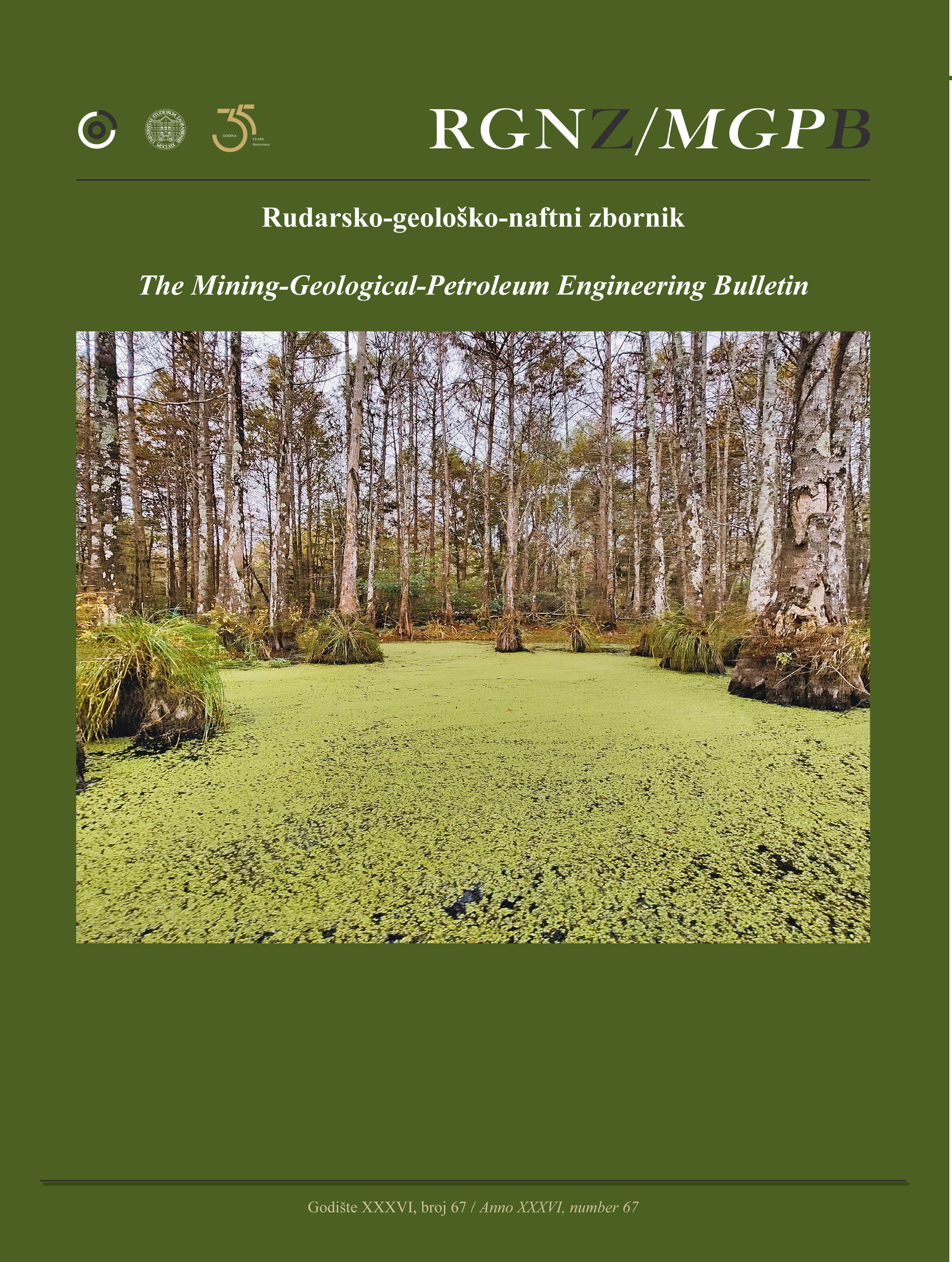Implementation of flotation to recover lead and barite from Komsheche Mine jig tailings
DOI:
https://doi.org/10.17794/rgn.2024.1.2Keywords:
lead, barite, concentration, gravity separation, flotationAbstract
With the increase in the basic metal prices, including lead, in the global markets, the processing of this precious metal, particularly for low-grade deposits, has a high economic justification. Investigating the extraction of lead minerals, including galena which is one of the minerals associated with barite, is considered one of the products of barite by-products. The purpose of this research was to study on the potential of producing high-grade barite, and recovering lead concentrate as a by-product from the jig tailings of the Komsheche barite mine. The prepared sample was subjected to mineralogical studies, and the obtained results indicated that the sample contains barite, iron hydroxides and galena as the dominant minerals and the degree of liberation was 90-95% in the size of 100 microns. The work index of the sample was obtained by the standard bond ball mill which was 8.72 kWh/t, indicated that the sample was not hard. The lead and barite grades in sample were 0.34% and 64.83%, respectively. Considering the high specific gravity of lead and barite, the processing tests were carried out in 2 stages of primary pre-processing using Mozley multi-gravity separator and then enrichment by flotation approach. After the end of the Mozley tests, the grade of lead reached to 0.6%, some fines were removed, and the classified sample was prepared for the next stage, flotation. At the end, the grade of lead increased from 0.6% to 53% with a final recovery of 73.65% and separation efficiency was 73.48%. Also, the specific gravity and grade of barite reached from 3.9 g/cm3 and 67% to 4.4 g/cm3 and 95%, respectively. These values are remarkable and meet the needs of the industry.
Downloads
Published
How to Cite
Issue
Section
License
Copyright (c) 2024 Arash Faramaz, Hassan Maleki, Mohammad Noaparast, Golnaz Jozanikohan; Hanieh Noeparast

This work is licensed under a Creative Commons Attribution 4.0 International License.
Creative Commons-BY
Authors who publish with this journal agree to the following terms:
In agreeing this form, you certify that:
- You read the ethical codex of the RGN zbornik available at journal web.
- You submitted work is your original work, and has not previously been published and does not include any form of plagiarism.
- You own copyright in the submitted work, and are therefore permitted to assign the licence to publish to RGN zbornik.
- Your submitted work contains no violation of any existing copyright or other third party right or any material of an obscene, libellous or otherwise unlawful nature.
- You have obtained permission for and acknowledged the source of any illustrations, diagrams or other material included in the work of which you are not the copyright owner.
- You have taken due care to ensure the accuracy of the work, and that, to the best of your knowledge, there are no false statements made within it.
- All co-authors of this submitted work are aware of, and in agreement with, the terms of this licence and that the submitted manuscript has been approved by these authors.
Publication licence
You retain copyright in your submitted work, according to journal license policy (CC-BY). By signing this form you agree that RGN zbornik may publish it under the publication licence. In summary the licence allows the following:
Anyone is free:
- To copy, distribute, display, and perform the work.
- To make derivative works.
Under the following conditions:
- The original author must always be given credit.
- The work may not be used for commercial purposes.
- If the work is altered, transformed, or built upon, the resulting work may only be distributed under a licence identical to this one.
Exceptions to the licence
In addition to publishing the work printed under the above licence, RGN zbornik will also enable the work to be visible online.
The journal editorial can change the licence rules anytime but it cannot retroactively restrict author(s) rights.


